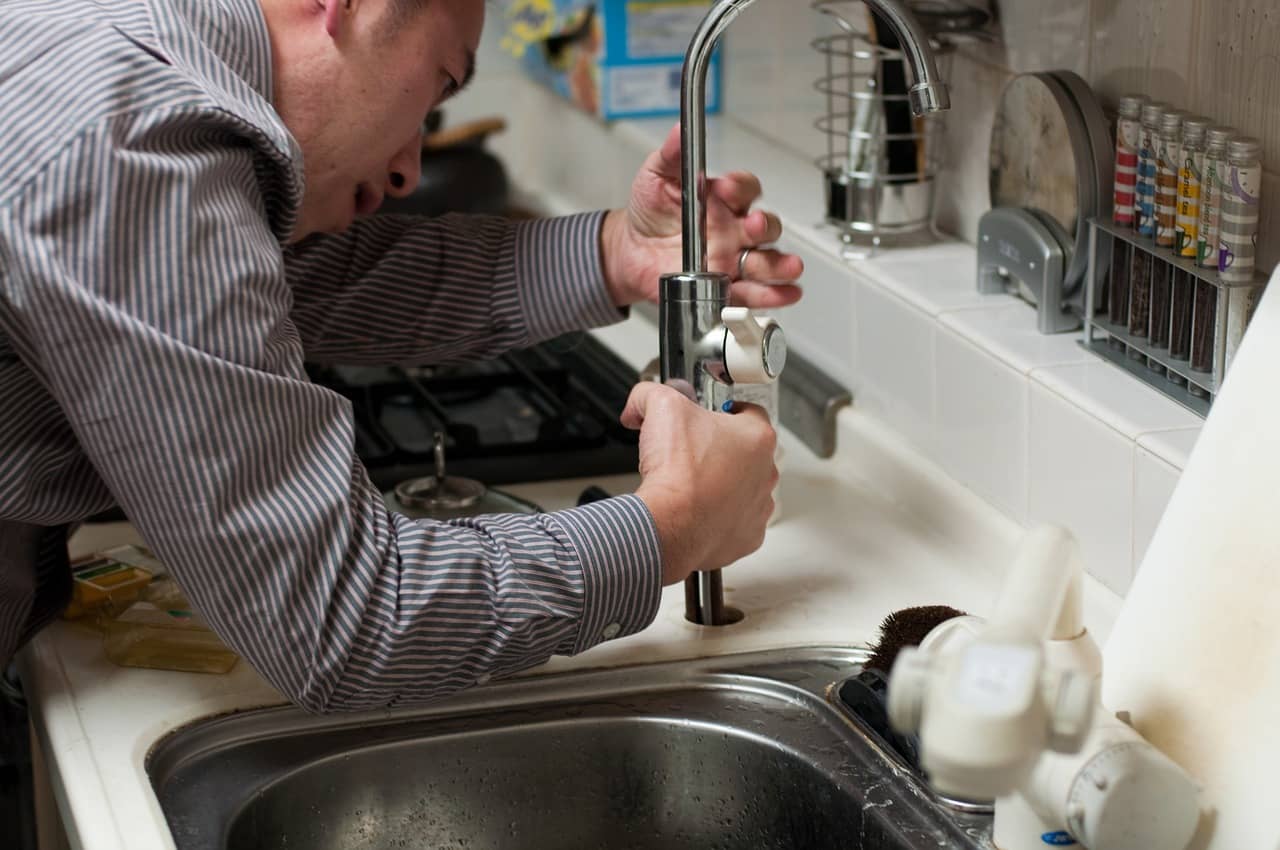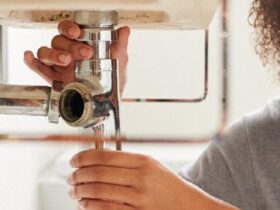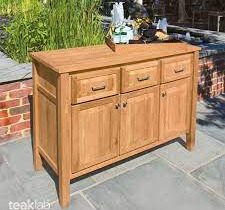Faulty plumbing can create serious hazards that threaten the health and lives of your little ones. Without adequate safeguards, they face significant risks like burns from uncontrolled water temperature and drowning from unguarded bathtubs or large sinks. These are all too real if plumbing safety measures are lacking.

Whether you have a one-pipe, two-pipe, single-stack, or single-stack with a partial ventilation system, following plumbing safety best practices for families with kids is non-negotiable. No system is immune to the hazards of inadequate plumbing safeguards; all require proper safety measures.
To facilitate maintenance and protection, it is crucial to install access doors and panels like the BA-AHA-GYP Recessed drywall panel door to conceal the plumbing systems. Regular checks and maintenance are necessary to ensure the system operates efficiently, detects issues early, and prevents leaks, clogs, or other plumbing problems.
Protecting Little Ones: Essential Plumbing Safety Measures for Child-Friendly Homes
As parents and caregivers to children, you need to ensure their overall safety. However, unlike fire accidents, plumbing safety is often overlooked by homeowners. But by implementing these essential plumbing safety hacks, you can guarantee a worry-free place for your little ones.
Here are 12 ways that you can implement to create a child-safe home.
1. Set the Optimal Water Heater Temperature
One way to protect children’s skin from burns is by controlling and setting the proper temperature, ensuring the faucet water is not hot. Setting the proper temperature will also prevent hypothermia, specifically during winter. Maintaining the water’s ideal temperature guarantees that children can wash their hands alone without discomfort.
2. Install Access Doors and Panels
Most access doors and panels, such as the BA-AHA-GYP Recessed drywall panel door, are multipurpose, allowing you to conceal the plumbing system from the children’s reach while keeping the system accessible enough for the maintenance and repair team. In addition, these access doors use plastic or steel material to prevent water from seeping into the walls, which may cause electrical and structural damage.
3. Install Anti-Scald Devices
Anti-scald devices or thermostatic mixing valves (TMV) have designs to regulate your home’s water temperature. They prevent water pressure fluctuations and help mix the hot and cold water to protect individuals from exposure to boiling water.
These devices are standard in residential settings with a considerable risk of scalding accidents. Homeowners usually install them in showers or bathtubs with a consistent water flow.
It is also common to see anti-scalding devices installed within your plumbing system. They contain a thermostatic element that helps control the water temperature. With the anti-scald system, you can adjust the water’s temperature. The device’s thermostatic element can efficiently detect the incoming water’s temperature and automatically adjust its ratio to maintain the water temperature.
Another benefit anti-scald devices offer is preventing scalding when there’s a sudden loss of cold water. It automatically reduces or shuts off the hot water supply to maintain a safe water temperature for the entire household.
4. Secure Water Sources
Children are naturally curious individuals and water sources are one of the things that attract them and will likely cause accidents when they are left unattended with the open faucet or where there is running water. To prevent them from turning on water sources, you must consider child-resistant faucet handles.
5. Invest in Toilet Seat Locks
It may sound uncommon, but this happens now and then. When left unattended in bathrooms, children tend to open the toilet lids and play with the water in the bowl. Unfortunately, some kids fall into the toilet bowl. By securing the toilet lid, children are safe from drowning hazards.
6. Close the Bathroom Door
Locking the toilet lid might not be enough to keep toddlers safe from drowning or scalding. So, make it a habit to keep the bathroom doors closed when not used to prevent children from having access to water.
Keeping the pails and basin water-empty and adequately storing them away from your children will also help put your mind at ease and worry-free from potential hazards.
7. Install Bathtub and Shower Safety
Transforming your bathtub into a safe environment for the entire household will reduce the risk of slips and falls. Place nonslip mats inside the shower or on your bathtub floor. However, only purchase nonslip mats or adhesive strips with a proven track record of keeping bathroom users safe.
If you plan to upgrade or renovate your bathroom, start working with its surfaces, particularly its floor. It would be best to have your construction team install a built-in textured surface to prevent your kids from slipping while showering.
You may also need to install a bathtub spout cover when upgrading your bathroom. A cushioned or soft cover protects your children’s heads from injuries when they slip and fall.
8. Utilize GCFI Outlets
GCFI outlets are specialized outlets with an additional layer of protection. These outlets comply with National Electrical Code and are best for electrical outlets within 5 feet of your home’s water sources located in these areas:
- Bathrooms
- Kitchens
- Garages
- Basements
- Crawl Spaces
- Laundry Rooms
- Outdoor Spaces
- Water Heaters
- Wet Bars
Although the law did not require homeowners to install GFCI outlets specifically, they are known for quickly detecting any malfunction and electrical problem protecting your family from fire and electrocution.
In addition, they can also determine whether your house has abnormal energy flow. They turn off the power to prevent ground faults and other severe injuries if they find excess energy.
9. 3 Types of GFCIs You Can Use
Receptacle – the most common GFCI you can use, protecting outlets on the same circuit
Circuit Breaker – ideal for outdoor spaces; homeowners prefer to use this GFCI as it covers the entire course
Temporary – for construction professionals working on the job site
10. Use Drain Catchers
A drain catcher or drain strainer is a small device you can install in your bathroom or your sink to prevent hair and other materials that may clog your drain.
Drain catchers are ideal for homes with curious children prone to stuff the drain. They can prevent toys, tissues, and small items from clogging the drain. Also Read – Kitchen wall decor ideas | Ideas, accessories, latest trendy designs
11. Install a Frost-Free Hose Bib
Your water may inevitably freeze in your plumbing system during winter, and frozen pipes can damage or split leading to costly repairs and water damage inside your home. Install a frost-free hose bib to prevent this and avoid any burst pipes risk. It contains a valve that opens when the water begins to freeze, allowing it to drain and prevent it from freezing inside the pipe.
12. Supervise and Educate
While devices can help restrict children’s access to water, constant supervision is still crucial due to their natural curiosity. They may still try to interact with water sources even with protective devices present. It will also help if you teach them the effects of faulty faucets, toilets, and other plumbing fixtures in a manner that they will understand. By doing this, you encourage them to ask for help from any adult in your house when reaching for water-related appliances.
13. Schedule Plumbing Inspection
Aside from checking any loose handles, leaks, and malfunctioning valves, it is best to let a professional technician inspect your entire plumbing system for any damage that may pose a risk. Through this, they can promptly repair or replace these components to keep a safe-to-use water source.
Conclusion
Carefully examining potential hazards in and around your home is crucial to prevent dangers before they threaten your children. By implementing these plumbing safety measures, you can create a safe environment where they can grow and explore without risking injury. From scalding-temperature burns to drowning dangers, proactive measures are the difference between a worrisome “what if?” and a restful night’s sleep knowing your little ones are secure.














